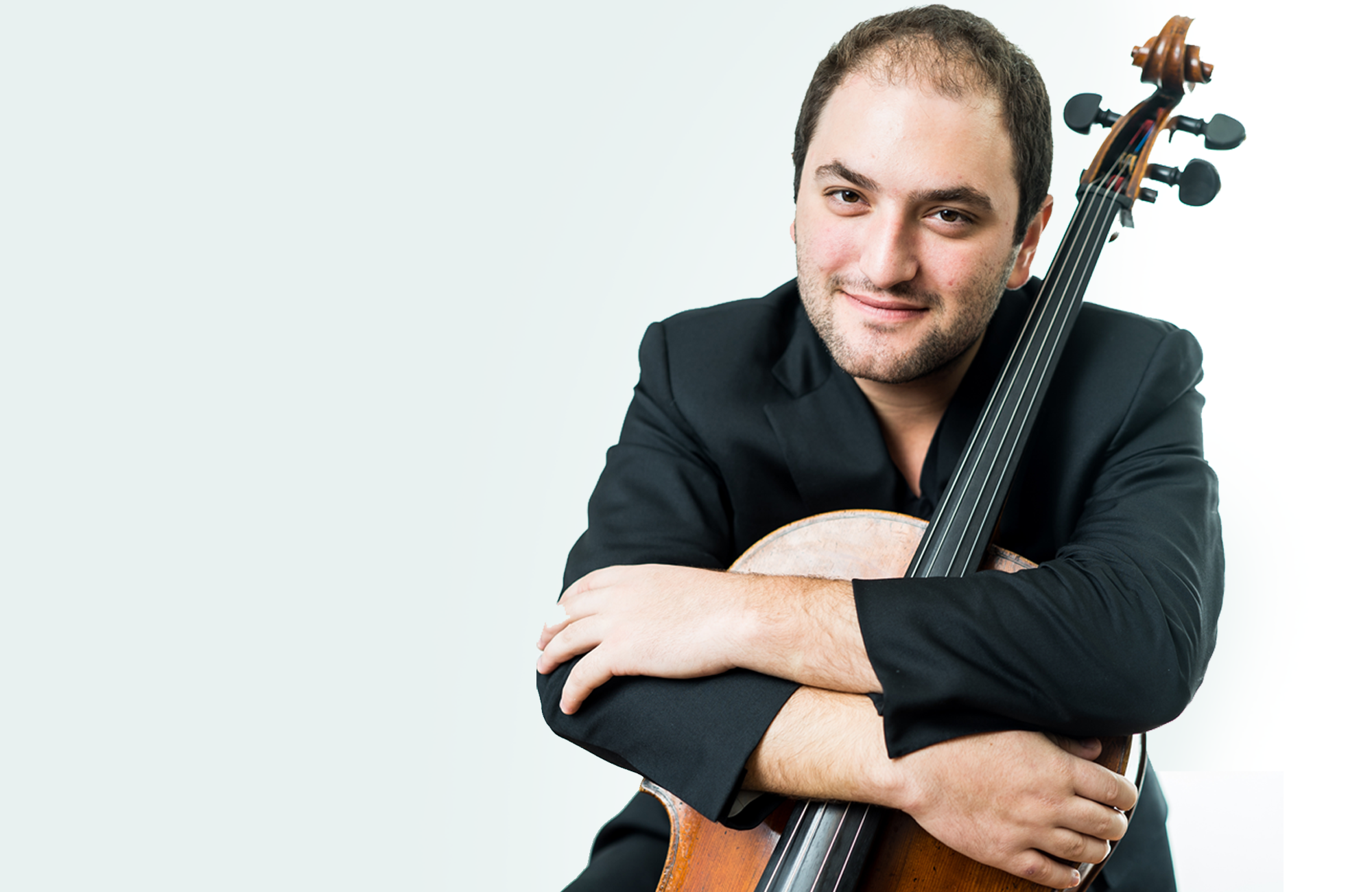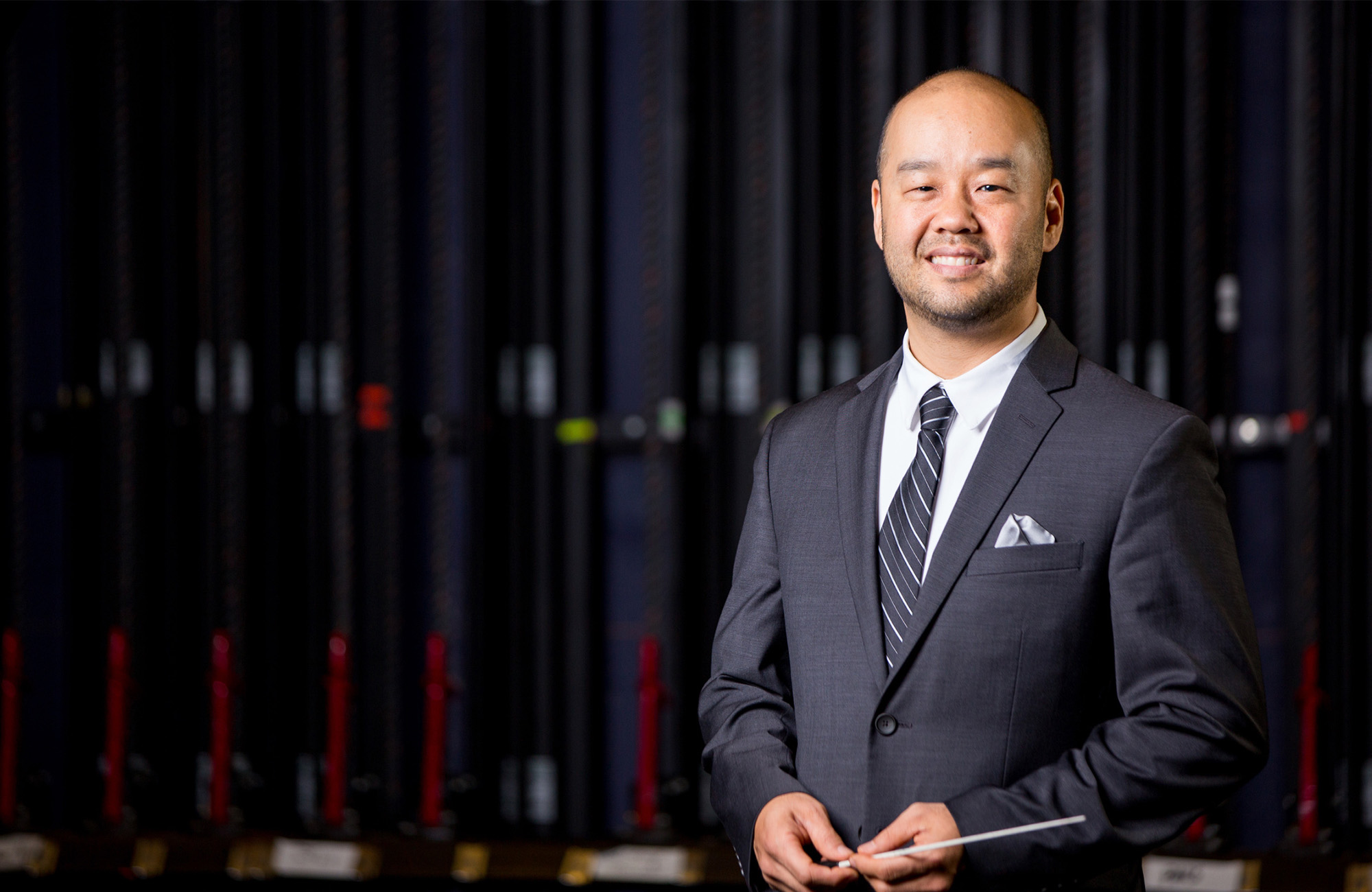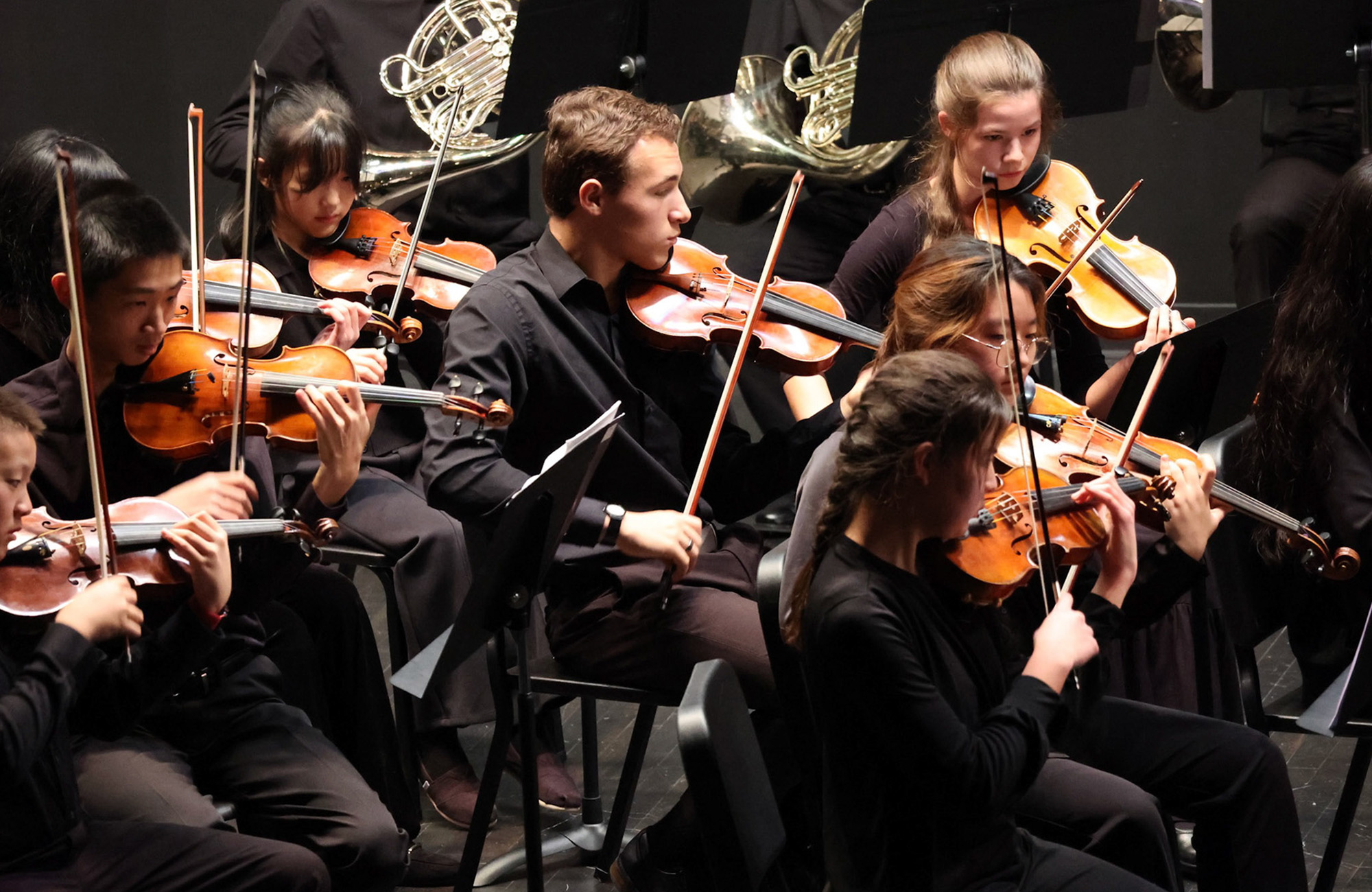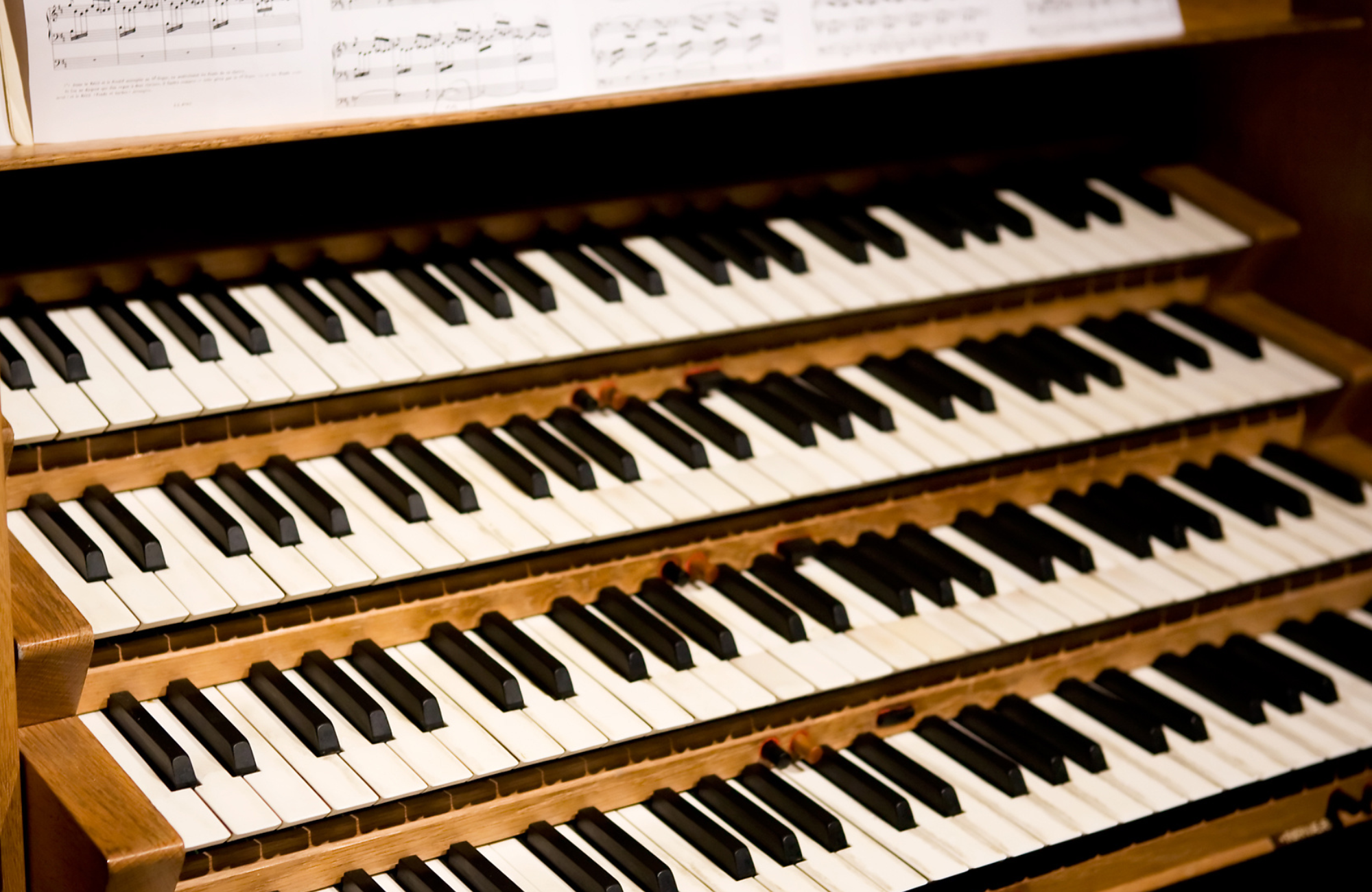Longtime favorite returning artist and international award-winning cellist Julian Schwarz plays Tchaikovsky’s Variations on a Rococo Theme. Lawrence Loh conducts Mahler’s Symphony No. 5 for the first time, bringing back to our stage one of the most famous purely orchestral Mahler symphonies.
PROGRAM
TCHAIKOVSKY: Variations on a Rococo Theme, Op. 33, TH57 ![]()
MAHLER: Symphony No. 5 in C-sharp minor ![]()
Thanks to our sponsors for this performance!


David & Cheryl Abrams
Thanks to our media sponsor.

PROGRAM NOTES
We ended last season in spectacular fashion with the Second Symphony of Gustav Mahler (1860–1911). This year, we take up his Symphony No. 5, written nearly a decade later (1901–1902). There are striking similarities between them. Both are, unconventionally, in five movements rather than four. Both move from the darkness of an opening funeral march to an optimistic close that leans heavily on a chorale. And in both works, that journey is full of shocking juxtapositions.
But that decade brought a change in Mahler’s vision. The Second takes its inspiration (or ...
We ended last season in spectacular fashion with the Second Symphony of Gustav Mahler (1860–1911). This year, we take up his Symphony No. 5, written nearly a decade later (1901–1902). There are striking similarities between them. Both are, unconventionally, in five movements rather than four. Both move from the darkness of an opening funeral march to an optimistic close that leans heavily on a chorale. And in both works, that journey is full of shocking juxtapositions.
But that decade brought a change in Mahler’s vision. The Second takes its inspiration (or more accurately, its challenge) from Beethoven, his Ninth Symphony in particular; the Fifth, with its heavy reliance on counterpoint, is an homage to Bach. The joy at the end of the Second, supported by words as well as music, is spiritually transcendent; the joy at the end of the Fifth, purely instrumental, is more down to earth. (Indeed, it almost seems as if Bach had replaced whatever complex and ambiguous spirituality had fueled the Second. As Mahler said, “In Bach, all the seeds of music are found, as the world is contained in God. It’s the greatest polyphony that ever existed.”)
Most important, the Second is firmly placed in the 19th century; in fact, it seems intended as its culmination. The Fifth—even though its Bach inspiration looks further back, to the Baroque—launches the new century. Not that it’s forbidding—it is an easily accessible piece. But it’s surely wild: with its off-kilter phrasing, unexpected dissolves, odd changes in sonority, and swerves in direction, the Fifth promotes formal disruption to a central position in the music’s aesthetic. In a letter to his wife Alma after the first rehearsal, Mahler described it as a “foaming, roaring, raging sea of sound” in which “new worlds are forever being engendered, only to crumble to ruins the moment after.”
The work’s five movements are organized into three parts. Part One consists of a pair of hyper-intense movements. The first, introduced by a stark trumpet solo, is what conductor Larry Loh calls a “stately” funeral march. It’s followed by a movement which might seem to be a tumultuous response. The opening is marked Stürmisch bewegt. Mit grösster Vehemenz (Turbulently emotional. With the greatest vehemence)—and it’s a whirlwind of emotions, bursts of fury frequently interrupted by moments of sublime tenderness. The movement seems ready to conclude majestically as it builds to an affirmative chorale—but it suddenly collapses, and the movement lurches to its end, where, all energy spent, it expires with a single pp tap on the timpani.
Part Two begins after a long pause. It’s a single movement, but it’s the symphony’s longest, a Scherzo, with major obligato (solo) passages for the first-desk horn. It brings a substantial shift in mood, as we move from minor to major. In fact, it brings multiple shifts in mood. As our principal horn Jon Garland says, “One of the most challenging things about the obligato part is the wide variety of expression that is required. The opening passages are quite strong, and then the music transitions to these extended lyrical passages. But not for long, because it then transitions back to those opening passages, but this time with a somewhat more athletic take.” The careening movement is brimming with waltzes and ländler (the waltz’s rural predecessor)—and since these dances often sound inebriated, the music stumbles in a way that throws you off balance. As Mahler put it, its “the very devil of a movement.”
Part Three of the symphony returns to the two-movement structure, although the relation between the two is different this time. First we get an Adagietto—Mahler’s most famous single movement, often played alone. In contrast to the other four movements, this one—which cuts the orchestra down to strings and harp—is patient and luminous. Yet despite its relative straightforwardness, it has, over the years, generated the most varied interpretive responses. Conductors have chosen dramatically divergent tempos: a normal performance lasts anywhere from seven to twelve minutes (an unusually wide range), and there are outliers that stretch out to a quarter of an hour. There are radical differences in affect, as well. On the one hand, it’s had an honored role at ceremonies of mourning, especially since Leonard Bernstein played it at Robert Kennedy’s funeral—after which Jacqueline Kennedy, in a letter to the conductor, described it as “this strange music of all the gods who were crying,” adding “[it] was everything in my heart, … peace and pain and such drowning beauty.” Yet the work had a fundamentally different origin: it did not emerge from grief but was rather written, according to Mahler’s good friend Willem Mengelberg, as a love letter to Alma. Viewed from this perspective, it reflects not only Mahler’s longing, but also premonitions of the anguish that came to characterize their difficult marriage. For Larry, it’s definitely a love letter, but “it is a beautiful and contemplative work that could be taken in many different ways other than what was intended.” As for tempo, says Larry, “finding the right tempo is difficult You have to find that balance of stillness, but also enough direction, so that you can take in the phrases.”
“Of course, it’s always special to listen to the very beautiful Adagietto movement,” adds Jon, “but for the first horn, it’s particularly special because you are also simultaneously thinking quite a bit about playing the first note of the fifth movement.” That upbeat movement, which comes without a break, begins transparently, first with a horn call, then with a conversation among solo winds. But despite the easy-going opening, we soon find ourselves in a vigorous fugue for full orchestra, and the music hurtles ahead—characteristically, with a lot of sharp turns (and reminiscences from earlier movements)—until we realize that we are heading toward a reprise of the failed chorale from the second movement. Will it succeed this time? Yes—but in a uniquely Mahlerian way. I won’t spoil the effect by telling you precisely what happens; rest assured that it is both surprising and fulfilling, and that it leads to the most rambunctiously joyful ending in the entire Mahler canon.
This is the first time Larry has conducted the entire work (he’s conducted the Adagietto often), but it’s hardly new to him. In fact, it has “obsessed” him since his student days. “To me it has incredible depth and emotion. I would listen to it in the dark, thinking it was the pinnacle of what you can do with an orchestra emotionally. And I would study it and dream about the day that I would get to do it.” Listening tonight, you’ll understand that dream.
What can you program before the Mahler Fifth? On our one previous performance of the work, it was coupled with Saint-Saëns’s delightfully light-weight Second Piano Concerto. At the time, soloist Jon Nakamatsu quipped that it would be “overkill” to pair it with something that put equal demands on the listener: “You’re going to get a huge steak and potatoes, you don’t want ham right before. You want something that will prepare you, like salad.” Tonight we’ve chosen another deft work, the 1877 Variations on a Rococo Theme by Peter Ilyich Tchaikovsky (1840–1893)—and coincidentally, tonight’s soloist Julian Schwarz offers a similar metaphor, suggesting it was an “apéritif” that avoided the problem of “two main courses.”
The work was written for the virtuoso cellist Wilhelm Fitzenhagen—who not only inspired it, but also gave Tchaikovsky advice and introduced some alterations (including removing one of the variations and reordering others) that made their way into the first edition and became standard for decades. Usually, in a case like this—say, Bruckner’s Ninth Symphony, which was “improved” by his friend, conductor Ferdinand Löwe—the composer’s original score eventually takes over. Not so here. The Fitzenhagen version is still widely performed—and, in fact, that’s the version that Julian will offer tonight. Why? Perhaps some of it is nostalgia—it’s the version he first learned, and he still has a certain “bias” toward it. More important, he says, he has “a tremendous respect for Fitzenhagen as a cellist. There are obviously no recordings of him; but we know from his editorial markings and his own compositions the kind of techniques that he was good at, the kind of approach he had to playing. Tchaikovsky wasn’t a cellist; and as is the case with Joseph Joachim and the Brahms Violin Concerto, the piece is inseparable from the advocacy of the player.”
Most important, though, he believes that Fitzenhagen’s changes improve the work. Julian is “not a great fan” of the original Eighth Variation which Fitzenhagen—who was clearly not a great fan, either—removed; and Julian believes that the exciting variation that was originally in fourth place works much better at the end (where Fitzenhagen moved it) than buried in the middle.
As for the spirit of the piece: although it is based on a pseudo-rococo theme of Tchaikovsky’s own invention (there’s a similar pastiche of 18th-century music in his late opera Queen of Spades), and although it contains a certain amount of “prim and proper” music that evokes “people in white wigs,” Tchaikovsky’s “lush, heart-on-the-sleeve” romanticism still comes through. In fact, Julian sees it as closely related to Tchaikovsky’s ballet music. Yes, Tchaikovsky’s work is made up of true variations—that is, manipulations of an initial theme. But the term “variation” also refers to a solo number in a ballet—and Julian takes that as encouragement to “represent different characters in the piece.” For those who miss hearing The Nutcracker during the off-season, this may be the next-best thing.
Peter J. Rabinowitz
Have any comments or questions? Please write to me at prabinowitz@SyracuseOrchestra.org
FEATURED ARTISTS
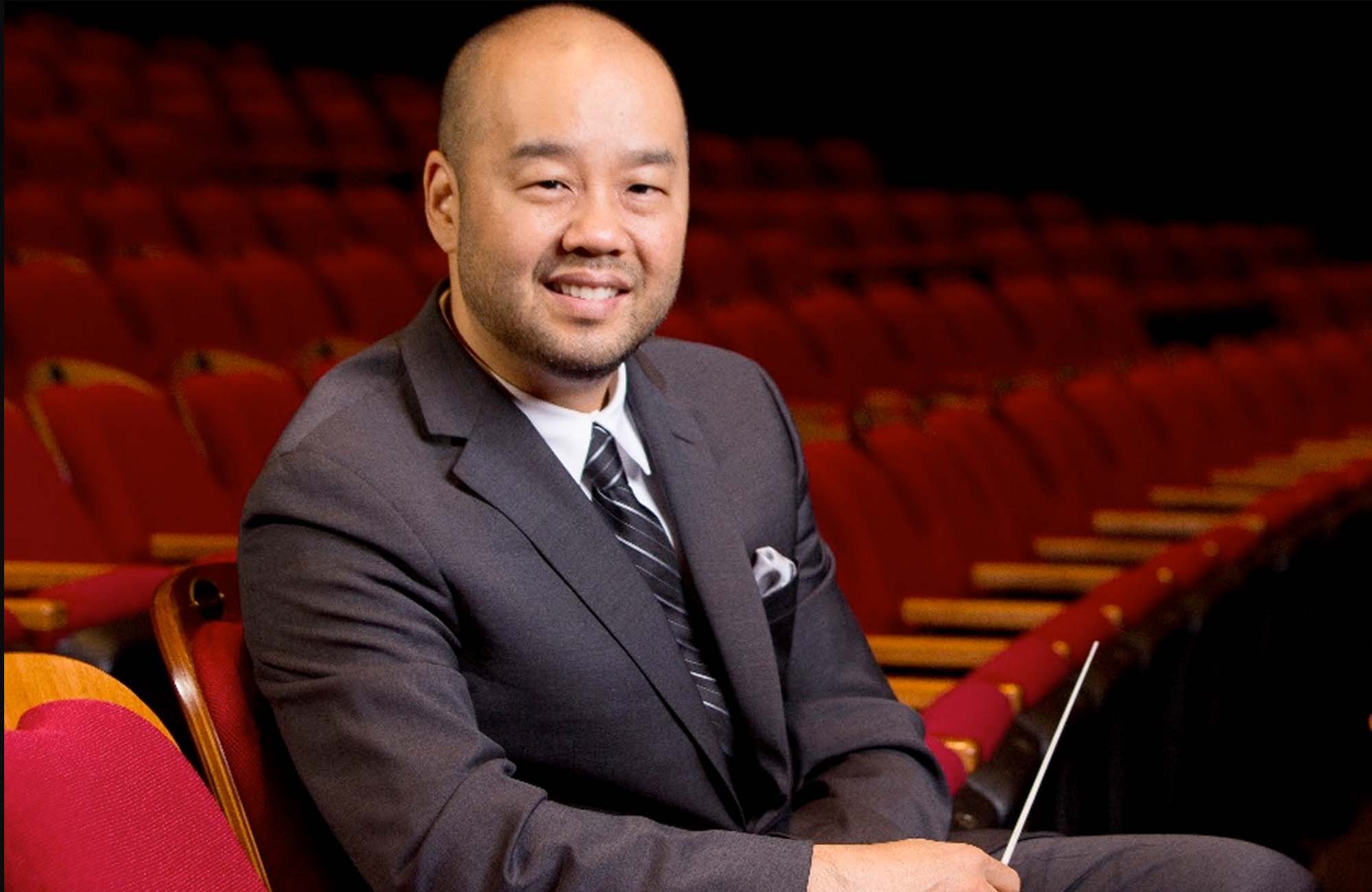
Described as bringing an “artisan storyteller’s sensitivity… shaping passages with clarity and power via beautifully sculpted dynamics… revealing orchestral character not seen or heard before” (Arts Knoxville) Lawrence Loh enjoys a dynamic career as a conductor of orchestras all over the world.
After an extensive two ...
Described as bringing an “artisan storyteller’s sensitivity… shaping passages with clarity and power via beautifully sculpted dynamics… revealing orchestral character not seen or heard before” (Arts Knoxville) Lawrence Loh enjoys a dynamic career as a conductor of orchestras all over the world.
After an extensive two year search, Lawrence Loh was recently named Music Director of the Waco Symphony Orchestra beginning in the Spring of 2024. Since 2015, he has served as Music Director of The Syracuse Orchestra (formerly called Symphoria), the successor to the Syracuse Symphony Orchestra. “The connection between the organization and its audience is one of the qualities that’s come to define Syracuse’s symphony as it wraps up its 10th season, a milestone that might have seemed impossible at the beginning,” (Syracuse.com) The Syracuse Orchestra and Lawrence Loh show that it is possible to create a “new, more sustainable artistic institution from the ground up.”
Appointed Assistant Conductor of the Pittsburgh Symphony in 2005, Mr Loh was quickly promoted to Associate and Resident Conductor within the first three years of working with the PSO. Always a favorite among Pittsburgh audiences, Loh returns frequently to his adopted city to conduct the PSO in a variety of concerts. Mr. Loh previously served as Music Director of the West Virginia Symphony Orchestra, Music Director of the Northeastern Pennsylvania Philharmonic, Artistic Director and Principal Conductor of the Syracuse Opera, Music Director of the Pittsburgh Youth Symphony Orchestra, Associate Conductor of the Dallas Symphony Orchestra, Associate Conductor of the Colorado Symphony Orchestra and Music Director of the Denver Young Artists Orchestra.
Mr. Loh’s recent guest conducting engagements include the San Francisco Symphony, Dallas Symphony, North Carolina Symphony, Baltimore Symphony, Sarasota Orchestra, Florida Orchestra, Pensacola Symphony, Atlanta Symphony, National Symphony, Detroit Symphony, San Diego Symphony, Seattle Symphony, National Symphony (D.C.), Utah Symphony, Rochester Philharmonic, Indianapolis Symphony, Calgary Philharmonic, Buffalo Philharmonic, Albany Symphony and the Cathedral Choral Society at the Washington National Cathedral. His summer appearances include the festivals of Grant Park, Boston University Tanglewood Institute, Tanglewood with the Boston Pops, Chautauqua, Sun Valley, Shippensburg, Bravo Vail Valley, the Kinhaven Music School and the Performing Arts Institute (PA).
As a self-described “Star Wars geek” and film music enthusiast, Loh has conducted numerous sold-out John Williams and film music tribute concerts. Part of his appeal is his ability to serve as both host and conductor. “It is his enthusiasm for Williams’ music and the films for which it was written that is Loh’s great strength in this program. A fan’s enthusiasm drives his performances in broad strokes and details and fills his speaking to the audience with irresistible appeal. He used no cue cards. One felt he could speak at filibuster length on Williams’ music.” (Pittsburgh Tribune)
Mr Loh has assisted John Williams on multiple occasions and has worked with a wide range of pops artists from Chris Botti and Ann Hampton Callaway to Jason Alexander and Idina Menzel. As one of the most requested conductors for conducting Films in Concert, Loh has led Black Panther, Star Wars (Episodes 4-6), Jaws, Nightmare Before Christmas, Jurassic Park, Casablanca, The Wizard of Oz and Singin’ in the Rain, among other film productions.
Lawrence Loh received his Artist Diploma in Orchestral Conducting from Yale, his Masters in Choral Conducting from Indiana University and his Bachelor of Arts from the University of Rochester. Lawrence Loh was born in southern California of Korean parentage and raised in Carlisle, Pennsylvania. He and his wife Jennifer have a son, Charlie, and a daughter, Hilary. Follow him on instagram @conductorlarryloh or Facebook at @lawrencelohconductor or visit his website, www.lawrenceloh.com
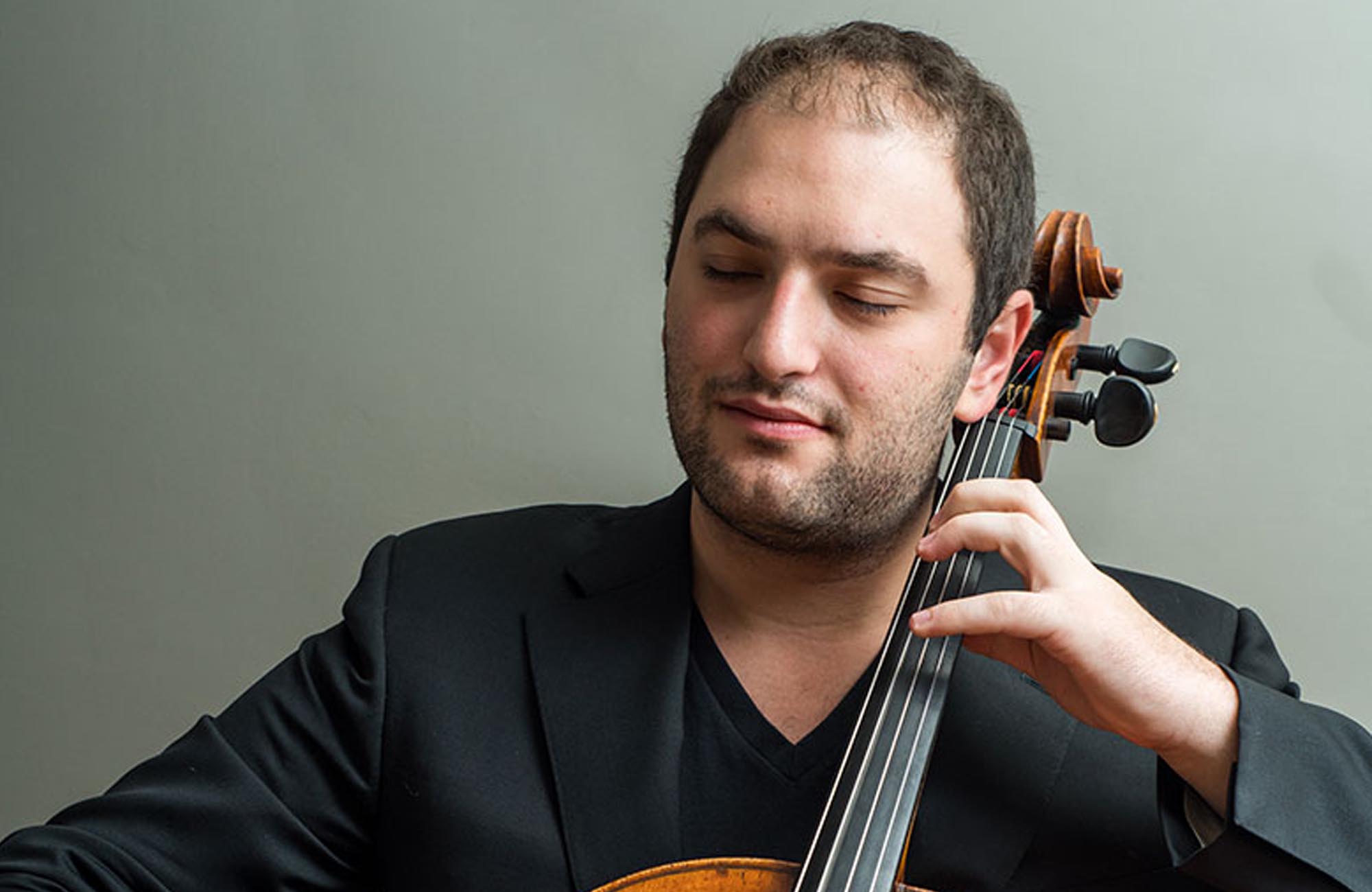
Julian Schwarz has been heralded from a young age as a cellist destined to rank among the greatest of the 21st century, Julian’s powerful tone, effortless virtuosity, and extraordinarily large color palette are hallmarks of his style.
After making his concerto debut at the age of 11 ...
Julian Schwarz has been heralded from a young age as a cellist destined to rank among the greatest of the 21st century, Julian’s powerful tone, effortless virtuosity, and extraordinarily large color palette are hallmarks of his style.
After making his concerto debut at the age of 11 with the Seattle Symphony, he made his US touring debut with the Moscow Radio Symphony Orchestra in 2010. Since being awarded first prize at the inaugural Schoenfeld International String Competition in Hong Kong, he has led an active career as soloist, performing with the symphony orchestras of Annapolis, Arizona, Boise, Buffalo, Charlotte, Columbus, Delaware, Des Moines, Hartford, Jacksonville, Louisville, Memphis, Modesto, Omaha, Puerto Rico, Richmond, Rochester, San Antonio, San Jose, Sarasota, Syracuse, Toledo, Tucson, Virginia, West Virginia, Wichita, and Winston-Salem, among many others. Internationally, he made his Australian debut with the Queensland Symphony, his Mexican debuts with the Boca del Rio Philharmonic in Veracruz and the Mexico City Philharmonic with frequent collaborator Jorge Mester.
As a chamber musician, Mr. Schwarz performs extensively in recital with pianist Marika Bournaki. In 2016 Schwarz & Bournaki were awarded first prize at the inaugural Boulder International Chamber Music Competition’s “The Art of Duo”, and subsequently embarked on an extensive 10-recital tour of China in March 2017. Mr. Schwarz is a founding member of the New York based touring ensemble “Frisson” and was recently appointed the newest core member of the Olmos Ensemble in San Antonio, TX. He is a member of the Palladium Chamber Players (St Petersburg FL), the Alaria Ensemble (New York NY), and has given over 100 performances at Brooklyn’s Bargemusic. He has appeared at the Cape Cod Chamber Music Festival, Orcas Island Chamber Music Festival, Seattle Chamber Music Festival, Josef Gingold Chamber Music Festival, Verbier Festival, and the Salzburg Mozarteum. In addition, he runs programming for the Tuesday evening chamber music series at the Eastern Music Festival in Greensboro, NC.
Mr. Schwarz is deeply committed to the future of American music, and will present the world premiere of Jennifer Higdon’s first Cello Concertro with a large consortium of orchestras spring 2026. His championing the cello music of Arthur Foote will result in the first commercial recording of Foote’s Cello Concerto (1894) with the Buffalo Philharmonic, to be released on the Delos label. Past commissioning projects include concertos by Lowell Liebermann (recorded with the Annapolis Symphony for release in 2025), Richard Danielpour, and Samuel Jones (recorded with the All Star Orchestra for public television in 2012, subsequently released as a DVD on Naxos). Other premieres include recital works by Paul Frucht, Scott Ordway, Jonathan Cziner, Gavin Fraser, Alex Weiser, Ofer Ben-Amots, Michael Ippolito, chamber music by Adolphus Hailstork, Henri Lazarof, Jonathan Newman, Bright Sheng, and the US Premiere of Dobrinka Tabakova’s Cello Concerto. Of special note is Mr. Schwarz’s ongoing commitment to the music of Jewish experience, including projects with the YIVO Institute for Jewish Research (music of Joachim Stutschewsky and his circle), the Defiant Requiem Foundation (music of Holocaust composers and their influence) Central Synagogue (yearly feature on Jewish Broadcasting), the Milken Archive of American Jewish Music—for which he has recorded the complete cello/piano works of Ernest Bloch, and a new association with South Florida Public Broadcasting to raise awareness of the history of Jewish music.
A devoted teacher, Mr. Schwarz serves as Associate Professor of Cello and String Area Coordinator at Shenandoah Conservatory of Shenandoah University (Winchester, VA), and on the artist faculty of NYU’s Steinhardt School of Music. In the summer, he teaches and performs at the Eastern Music Festival and the Josef Gingold Festival. In 2023, he was one of the first cellists to record pedagogical tutorials for the online teaching platform Tonebase, including comprehensive examinations of the Elgar Concerto, Piatti Caprices, tone production, and vocal elements in cello playing. As a writer, he has contributed frequently to Strings Magazine’s Artist Blog, has written learner’s guides for The Violin Channel, and has edited a series of Ernest Bloch editions with written prefaces for Carl Fischer Publishing. Past faculty appointments include artist-in-residence at the Lunenburg Academy of Music Performance (Nova Scotia, Canada) and faculty teaching assistant to Joel Krosnick at The Juilliard School.
Born in Seattle, WA in 1991 to a multigenerational musical family, Mr. Schwarz studied at the Academy of Music Northwest and the Lakeside School. He continued to the Colburn School in Los Angeles under Ronald Leonard, and then moved to New York City to study with mentor Joel Krosnick at The Juilliard School (BM 14, MM 16). Other influential teachers include the late David Tonkonogui, the late Toby Saks, the late Lynn Harrell, Neal Cary, and chamber music mentors Andre Roy, Arnold Steinhardt, Jonathan Feldman, Toby Appel and Paul Coletti. Julian plays a Neapolitan cello made by Gennaro Gagliano in 1743 and American bows by Paul Martin Siefried. A Pirastro and Melos artist, he endorses and plays the “Perpetual” medium and edition sets of cello strings and Melos light rosin.
Julianschwarz.com


